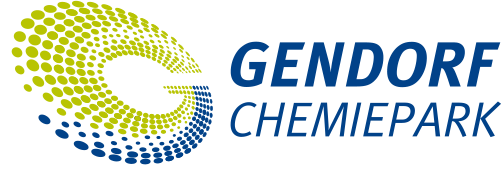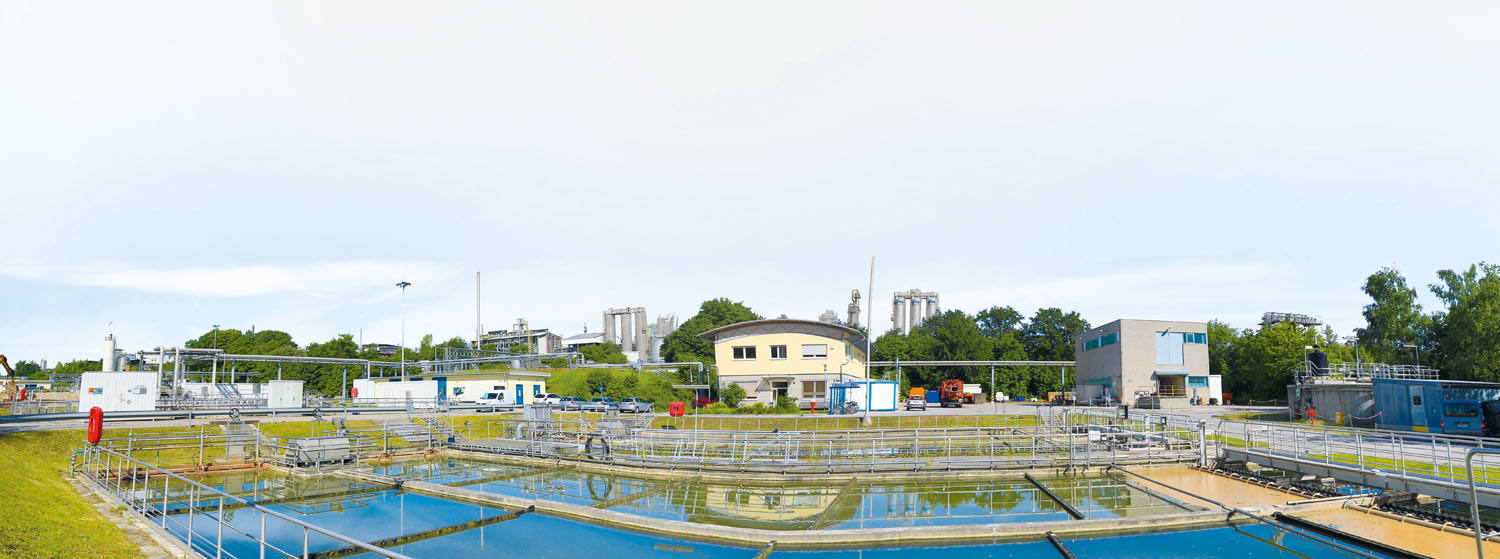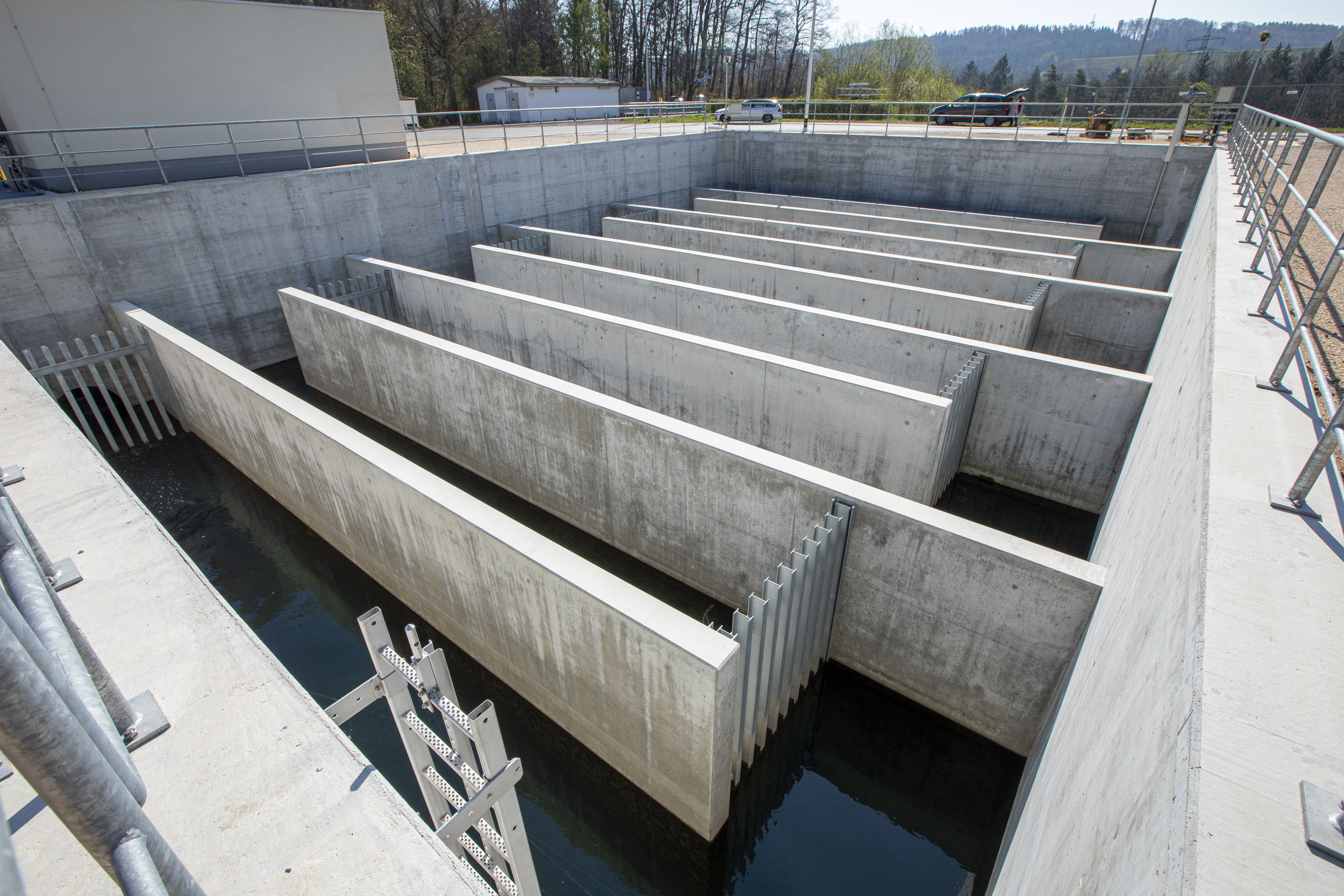Like other chemical companies in the region, the GENDORF Chemical Park uses the River Alz as a supplier of cooling and process water. 90 percent of the water eventually flows back into the Alz. Prior to this, it undergoes a careful check for harmful substances. In order to compensate for time delays in the measurement technology for the analysis of cooling and rainwater, InfraServ Gendorf invested in a clever solution: delay basins.
Each of the tanks, which are around 29 metres long and approx. 10 metres wide, has a labyrinth-like design that extends the residence time of the cooling and rainwater, thus allowing sufficient time for adequate testing for pollutants. This makes it possible to safely divert the water to the central water retention system (ZWR) when contaminants are detected and to retain it there.
The delay structures are an innovation made by InfraServ Gendorf. In their form and function, the basins are a completely new development, taking into account the experience gained from plants implemented at other locations. Together with the equipment manufacturer, the analysis technology has been improved in such a way that the required minimum retention time of the water is among the best in this class. In addition, the water flow in the basins was optimised in terms of flow in cooperation with the Technical University of Munich.



